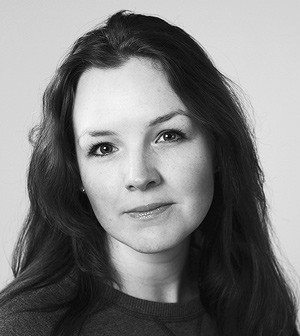The Journal of the Norwegian Medical Association is the association’s membership newsletter – and also a scientific publication. In order to maintain a credible profile as a medical journal, there needs to be an awareness of the role of the editor and of what editorial freedom entails.

Photo: Einar Nilsen
The Journal of the Norwegian Medical Association is more than a membership newsletter – it is a medical journal which publishes new research, overviews of medical knowledge, and material keyed to debates about the profession and health policy, in accordance with its mandate (1). In order to fulfil this remit in a credible manner, it is right and proper that evaluations of what is to be published are made on an independent basis. For the Journal (Tidsskriftet), this means being independent of the wishes and opinions of our owner, the Norwegian Medical Association, as a health and social policy actor. This editorial independence is laid down in the laws of the Medical Association, which state that Tidsskriftet shall be edited in accordance with the declaration agreed upon by The Association of Norwegian Editors and The Norwegian Media Business Association (2).
The declaration states as follows: «An editor is required to share the essential world view and statutory objectives of his/her medium; but within these parameters, the editor shall have freedom and independence to manage the editorial staff and full freedom to shape the opinions of the medium, even when certain views are not shared by the publisher or the board» (3). What you read in the Journal of the Norwegian Medical Association is therefore not a product adapted to the Medical Association’s communication strategy, but a result of editorial assessments based on the editorial line which is at all times decided by the editor-in-chief (4). Tidsskriftet as a scientific publication has also committed itself to following the recommendations of the International Committee of Medical Journal Editors (ICMJE) (5). This is a group of editors-in-chief of leading medical publications, best known as the Vancouver group, which puts forward and updates recommendations for how medical journals should address their work of publishing information on medical science. Since 1978 until fairly recently, the editor-in-chief of the Journal of the Norwegian Medical Association has been part of this group.
Charlotte Haug, editor-in-chief for 13 years, recently resigned from her position following what has been described as a disagreement between the Medical Association and Dr Haug about the management, running and administration of Tidsskriftet (6 – 9). Several editors-in-chief of leading international medical journals have expressed concern about the process which led to Dr Haug’s resignation (9). It is clear that the relationship between Tidsskriftet and the Medical Association is not currently organised in a manner that fully accords with the recommendations of the Vancouver group, particularly with regard to the editor’s conditions of employment (5). The Vancouver group recommends that such decisions are made by a panel of independent experts, rather than by the association’s executive management. A panel with this type of authority does not exist at present. An independent panel will ensure that the reason for a change of editor is not an article or an editorial line which has repercussions for the owner, and will therefore serve to protect editorial freedom. Dr Haug’s resignation and the manner in which it took place have led to a loss of reputation and international recognition for Tidsskriftet, and we no longer hold a position in the Vancouver group. Our commitment to following the group’s recommendations is the same nonetheless.
With this in mind, it is right and proper that the Medical Association’s Central Board is now putting forward proposals to this year’s national board meeting to establish a committee with the task of evaluating all aspects of the relationship between Tidsskriftet and the Medical Association as its owner. In addition to examining routines for how the editor should be recruited and conflicts dealt with, there is also good reason to assess whether the current organisation is appropriate. The running of Tidsskriftet today is regarded as part of the association’s daily business, and the editorial staff is employed in its secretariat (2). The current organisation entails unclear boundaries between what comes under the editor’s area of responsibility and decision-making authority, and what comes within the remit of the secretary general with regard to administration, operations and financial priorities. A closer examination is also needed with regard to whether editorial freedom is sufficiently safeguarded when the editorial staff, including all the medical editors, is employed by the secretary general, who reports to the Central Board of the Medical Association.
What editorial freedom actually implies is a question that has no simple answers, and one which has become even more complicated to answer now that the media have a much greater presence on the Internet, independent of static paper versions. Web publication provides more choices for how the content is presented and disseminated – choices that can be vital for the communication of the message as intended. It goes without saying that the editor-in-chief shall decide on the words and content which are to be published, but who decides where – through what channels, when and in what context the content should be released? Who makes the decisions on important strategic, developmental choices that are essential for survival in the competitive media reality of which Tidsskriftet forms a part? The editor must have the necessary scope for manoeuvre to ensure that Tidsskriftet develops in step with the demands and expectations set for a modern scientific medium. Such latitude is essential if editorial freedom is to be a reality.
In order for the Journal to have the status of a credible and professional medical publication, a review of the current organisation is necessary, as well as a thorough assessment of how we best can ensure editorial freedom.